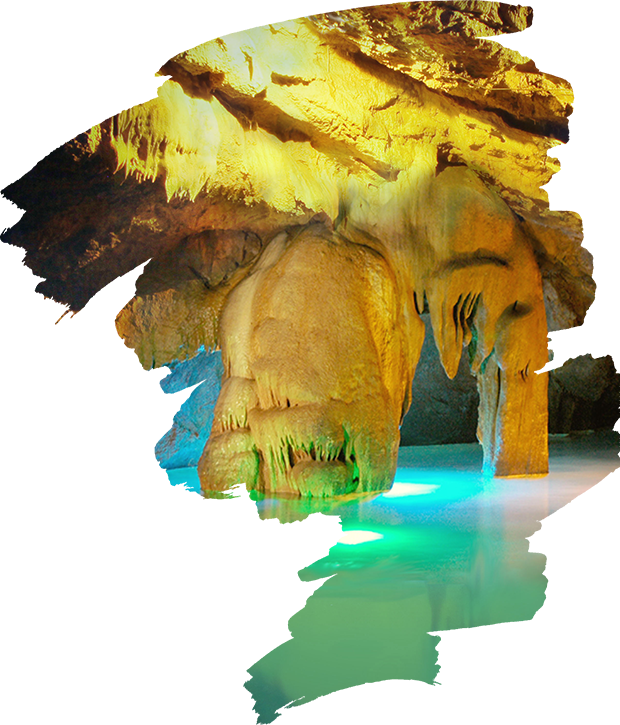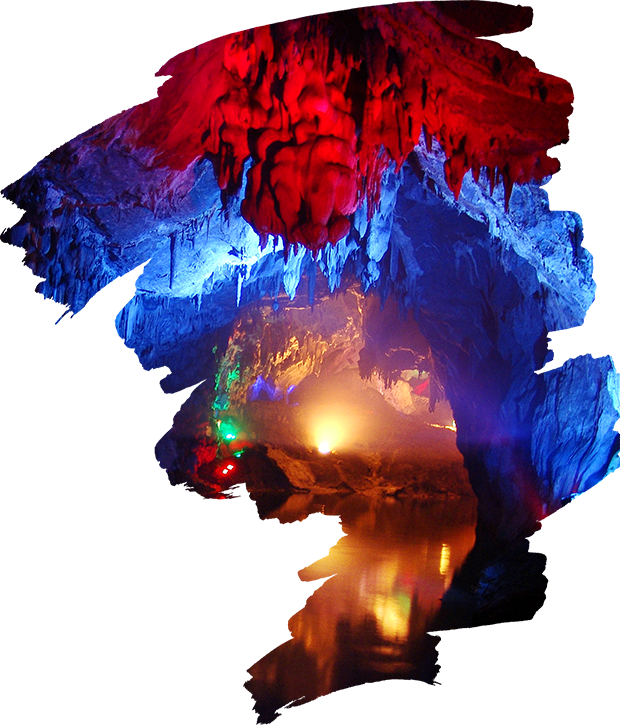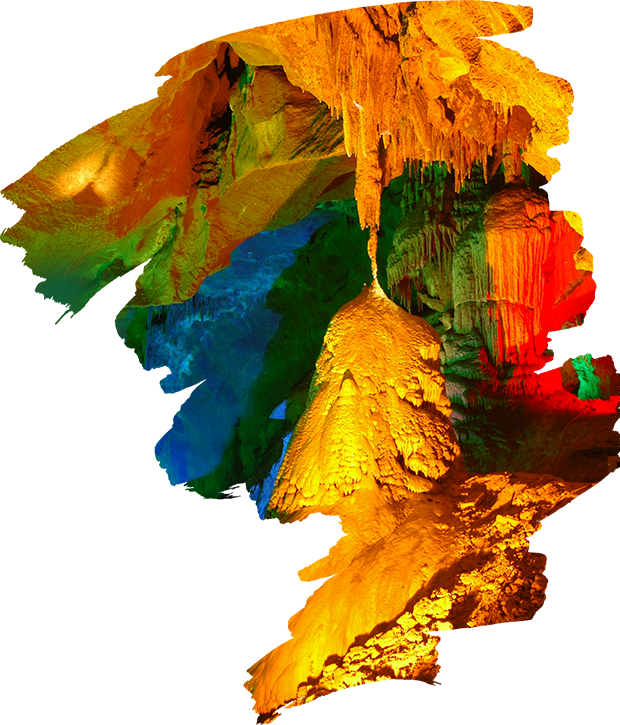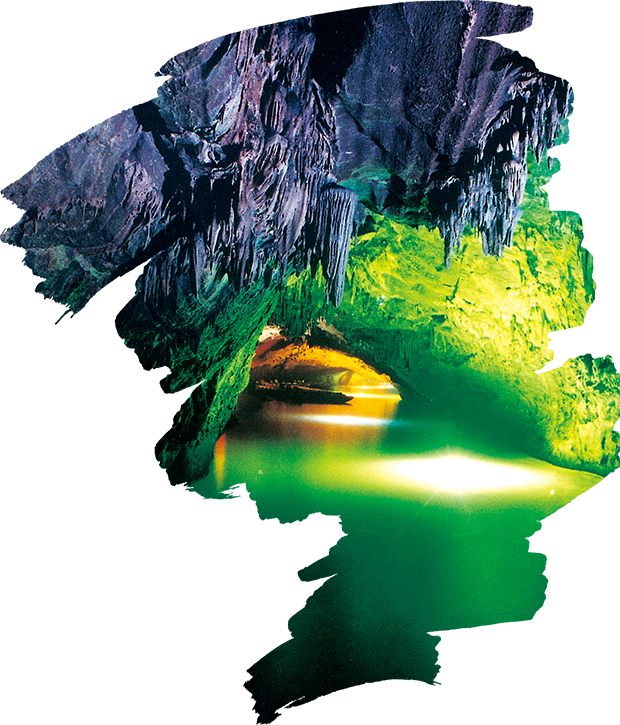Benxi Water Cave Scenic Area is located in the eastern mountainous area of Benxi City, Liaoning Province, 28 kilometers away from the urban area of Benxi. The scenic area covers an area of 10.6 square kilometers. It is a natural landscape scenic spot mainly composed of karst cave and underground river, integrating mountains, waters, caves, springs, lakes and forests. It was officially opened to the public on May 1, 1983. In 1992, it was accepted as the first batch of member units in Asia by the International Tourism Cave Association. In 1994, it was approved as a national scenic spot by the State Council. In October 2005, it was rated as "China's Most Beautiful Tourist Cave" by Chinese "National Geographic". In 2007, it was rated as one of the "Top Ten Most Potential Scenic Spots in China" by the Ministry of Construction. In 2009, it was successfully included in the National Natural Heritage List of China. In 2010, it was officially named as National Science Education Base by China Association for Science and Technology. In July 2015, it was awarded the title of AAAAA tourist attraction by the National Tourism Administration. In June 2018, it was certified as "The World's Longest Underground River Scenic Spot for Continuous Boat Tours" by the world record certification agency. Benxi Water Cave Scenic Area includes Benxi Water Cave (Winding Milky Way), China Geological Museum Benxi Branch, Silicified Wood Kingdom, Yanshui Paradise, Yujing Mountain Ecological Park and Resort Park, etc.



Benxi Water Cave is located in Xiake Mountain, which is the remnant of Changbai Mountain. The mountain is medium low, with a relative height of only 200-300 meters in rolling hills covered with trees. The Prince River flows by 200 meters ahead of the mouth of the cave. The jade belt is clear and meandering, and its lower reach flows into the Liao River and finally into the sea. The mouth of the cave faces north, 13 meters above the surface of the Prince River, and the cave extends into the mountains. Benxi Water Cave is a large aquifer underground river karst cave formed 400,000 years ago (Middle Pleistocene). The proven cave system consists of the Winding Milky Way Cave (main tunnel), Coiled Dragon Cave (dry cave), Silver Wave Cave (water-filled cave) and upstream extending the dark cave. The Benxi Water Cave generally runs from northwest to southeast. The main passage of the cave is completely distributed in the horizontal direction, and most of the sections are in shape of tunnel, hall and corridor. The size of the water cave is huge, and the karst landscape is full of different sceneries. There are more than ninety sites such as "Nine Bends", "Seven Palaces" and "Three Gorges". The Benxi Water Cave is 3650 meters long, covers an area of 49,000 square meters, and has more than 400,000 cubic meters of space. The most open area is 38 meters high and 70 meters wide. The air in the cave is unobstructed and the water flow is inexhaustible all year round. The flow rate is 14,000 cubic meters per day and night, the average water depth is 1.5 meters, the deepest part is 7 meters, and the constant temperature in the cave is 12℃. The river is meandering, and crystal clear. It was praised as:"The stalactite peaks form thousands of sceneries, and the light boat is sailing on the green water in the picturesque poetry; This wonderful place should be only available in the celestial world, and this cave is unique in the mortal world".

- Coiled Dragon Cave (Dry Cave)
The dry cave is 300 meters long, with staggered layout and caves in caves, twists and turns, each having its own features. The stalactites on the top of the cave and the side walls are mostly developed in groups along the fissures, showing various kinds of images, like the wonderland of Dragon Palace. Ancient well, Dragon Pool, A Hundred Step Pool and other landscapes evoke visitors' imagination and make them lingering on.


- Silicified Wood Kingdom
The Silicified Wood Kingdom is an important part of the Benxi Water Cave Park in the Benxi National Geopark in Liaoning. The Silicified Wood Kingdom is an ex-situ conservation silicified wood forest park. A total of 619 silicified wood stumps stand in the park. According to authoritative experts, these silicified wood are gymnosperms, most of which are conifers, and a few of which are ginkgoes. The reason why we call the petrified wood silicified wood is that their main mineralized component is silicon dioxide (SiO2). In general, when a dense forest is suddenly hit by a volcanic eruption, those trees near the crater are swallowed or burned by lava flow with high temperature and heat waves. While the trees farther away from the crater are buried in the land they originally grow by falling volcanic ash, coupled with the high temperature of a large amount of silicate solution and the burning of the heat wave, making them silicified upright stumps. As we all know, in the evolutionary history of life on the earth, wood fossils represent an integral part of vegetation and play an important role. When you walk and look around in the "Silicified Wood Kingdom", you will naturally understand how these wood fossils were formed; the palaeogeographical and palaeoecological environment and the palaeoclimatic conditions they have been through in the place of origin; and the geological replacement process of palaeovegetation. So, while you enjoy this green world of 180 million years ago, please don't forget to protect the earth that we live on today.
- China Geological Museum Benxi Branch
The China Geological Museum Benxi Branch was built in 2007 and covers an area of 12,000 square meters with a building area of 4,200 square meters. It shows the main geological changes, and their types and characteristics since the birth of the earth 4.6 billion years ago. Geological relics and prehistoric geological relics in Benxi National Geological Park are displayed in the museum, with more than 30 precious specimens at national treasure level, 540 rare specimens, and 468 ore specimens, of which the Jingang Mountain Yi County pterosauria and the Yanornis eating fish are the only fossil specimens in the world; of which the sinosauropteryx and the caudipteryx are the most exquisite among the few specimens in the world; the nothosaurus, ichthyosaur, crinoid, group turtle, and Nine Dragon Wall are the finest among the fossils. They all have extremely high ornamental value and science popularization value. In 2011, it was rated as a land and resources science base.


- Yujing Mountain Ecological Park
Yujing Mountain and Benxi Water Cave are integrated. The cave is in the mountain and the park is on the mountain. The ecological park is covered with lush trees of many varieties, including walnut tree, birch tree, pine tree, oak tree, fir, locust tree and many other precious tree species. The ecological park has 5 nature reserves, known as "Liaodong Tree Museum". The Yujing Mountain Ecological Park has tranquil valleys, dense forests, greenery leaves and aromatic flowers. The 4km hiking trail in the mountain is winding, with more than 20 scenic spots alongside. Stepping up the stairs, you can see mossy stones, intertwining wistaria and lively squirrel, and hear hundreds of birds singing. Keep walking up, tree shadows are swaying and the air is fresh, like walking in a natural oxygen bar. After climbing to the top of the mountain, you can see many scenic spots such as Stone Buddha, Stone Dragon Post, Heavenly Book Wall, Long-lived Pine, Lying Lion Peak, Camel Ridge, Seven Star Poplar, Immortal Listening to the Wind, Lotus Peak, Heart Lock and Observation Deck, etc.
- Yanshui Paradise
Yanshui Paradise is located on the Prince Riverside. The Prince River was called Yanshui in the old days, and later it was also called the Liang River and Dongliang River. It started to be called the Prince River since Liao Dynasty. It is the third largest river in eastern Liaoning with a total length of 413 kilometers. It is originated from behind the Straw Hat Mountain in Benxi County. According to legend, after the failure of Prince Yan sending Jin Ke to kill the emperor of Qin, the emperor Qin Shi Huang was furious and sent troops to attack Yan. Prince Dan was defeated and fled to Yanshui. But Qin soldiers still did not stop, saying: they were vowed to take Prince Dan's head before retreat. To save the people, Prince Dan cut his throat with his sword. In order to commemorate Prince Dan's heroic death, the descendants changed Yanshui to Prince River, and built a "Yan Dan Pavilion" beside the river. The Prince River is rich in products, with over ten species of fish such as moroteuthis, siniperca chuatsi, and hemibarbuslabeo. Among them, moroteuthis was regarded as tributes in the Qing Dynasty. You can take a cruise, drive a yacht, and pedal a boat to enjoy the beautiful scenery on both sides.


- Resort Garden
The resort garden is located in the Silicified Wood Kingdom, covering an area of 8,000 square meters, with Four-faced Buddha, Ruyi Music Fountain, Jade Elephant tower and other landscapes. In the garden, there are animals such as peacocks for visitors to watch. There are thrilling crocodile performance and unique artist performance indoors. The shows are exciting and distinctive. Visitors can both participate in the program interaction and take photos with the artists.

 Scenic Area Office:024-44891160
Scenic Area Office:024-44891160 Tourist center of scenic spot:024-44891162
Tourist center of scenic spot:024-44891162 Tourist Service Center:noisy407@foxmail.com
Tourist Service Center:noisy407@foxmail.com Advertising investment:noisy407@foxmail.com
Advertising investment:noisy407@foxmail.com














